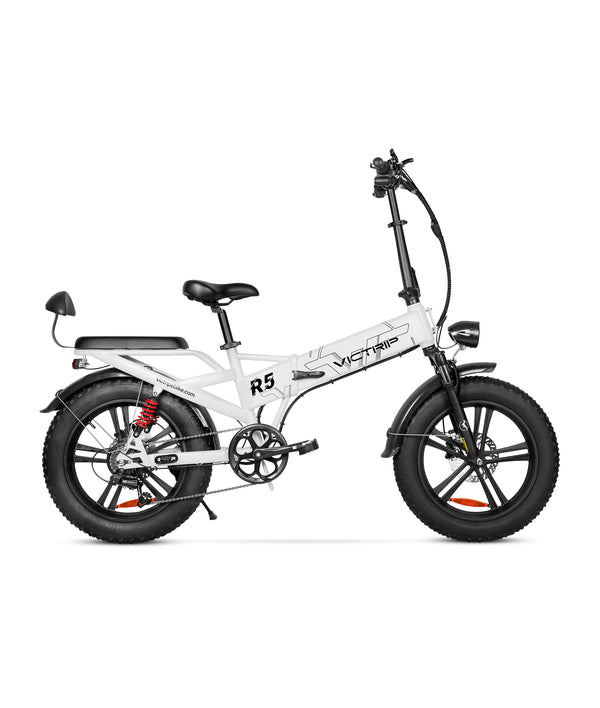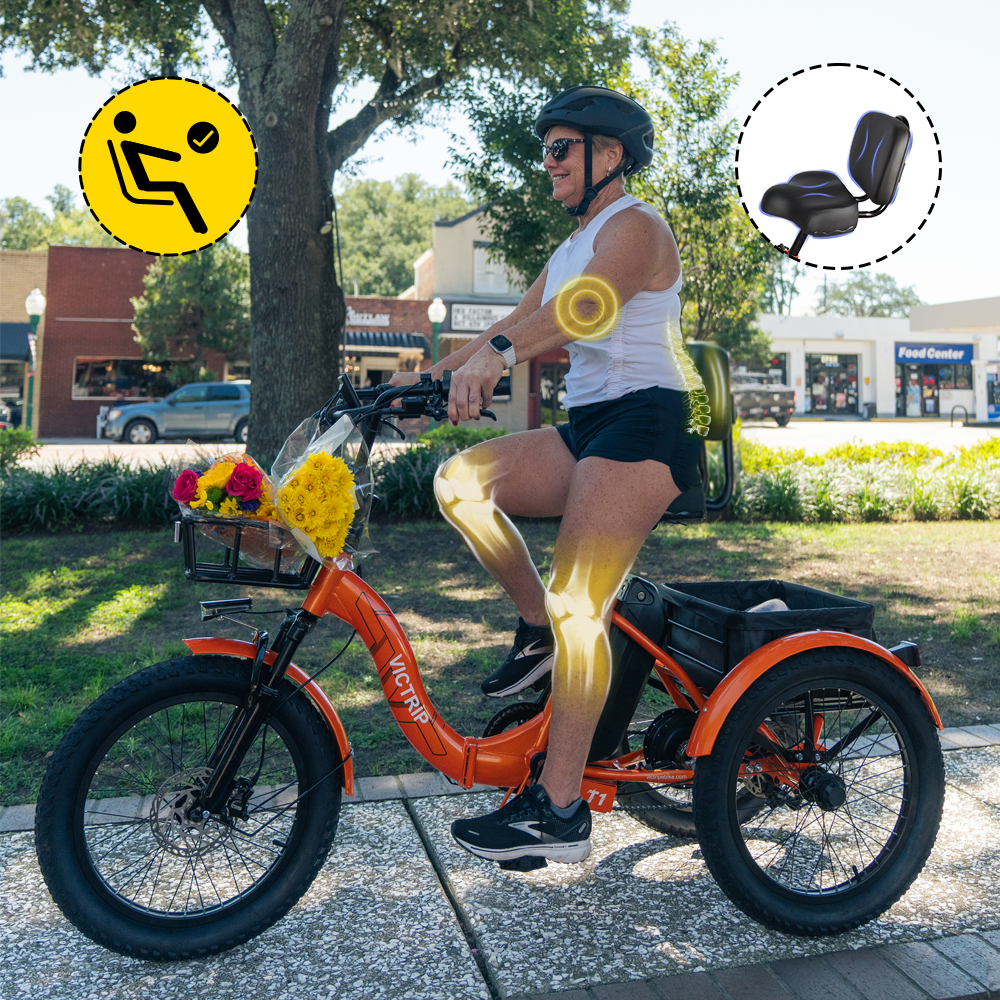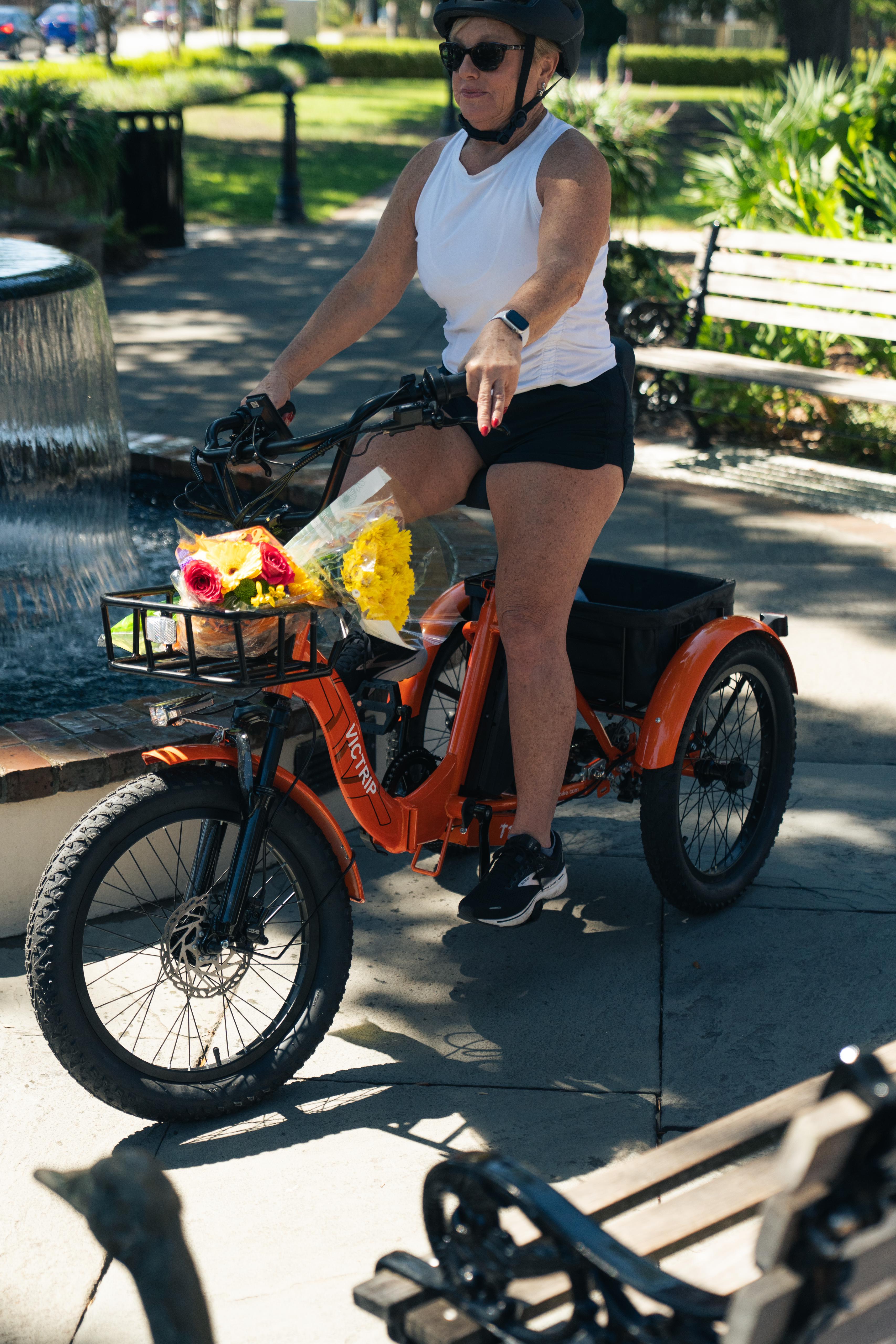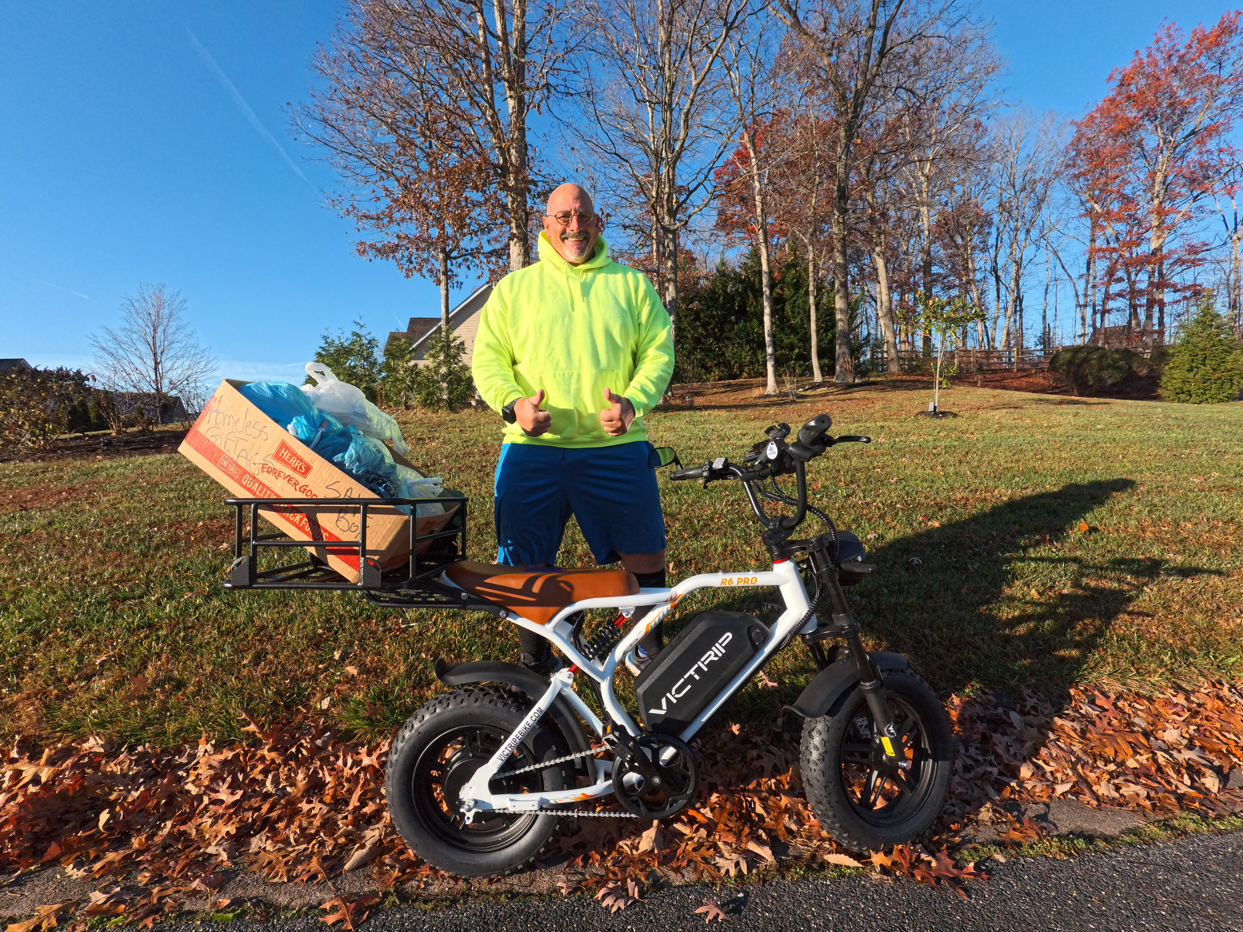Electric bikes have surged in popularity as efficient, eco-friendly alternatives to cars and public transit. Among them, the 750W electric bike stands out. It’s more powerful than typical commuter bikes (250–500W), yet doesn’t cross the threshold into high-powered territory that could result in restrictive regulations or require registration.

For many riders, that 750W sweet-spot delivers real-world benefits: smooth hill-climbing, dependable cruising speeds for commuting, and enough torque for weekend adventures. In this guide, we’ll dive into how fast a 750 watt ebike can really go, what affects that speed, and how to safely maximize performance.
What Does 750W Mean for an E‑Bike?
A 750W rating refers to the motor’s nominal continuous power output—around 1 hp. It gives your ride strong assist levels without dramatically increasing weight or complexity. While specs like peak watts or torque charts are important, nominal power gives a reliable benchmark.
Key motor factors that matter:
-
Voltage (36V vs. 48V or even 52V): Higher voltages often yield stronger torque and top-end speed.
-
Efficiency & controller design: Better electronics use power more effectively—meaning faster acceleration and smoother power delivery.
-
Torque: How fast the motor can spin under load (e.g., uphill or carrying cargo).
Average Speed of a 750W E‑Bike
While max speeds vary, many 750W e‑bikes are electronically capped for compliance:
- Class 1: Pedal-assist only, with a maximum speed of 20 mph.
- Class 2 (throttle only): Up to 20 mph (32 km/h)
-
Class 3 (pedal assist): Up to 28 mph (45 km/h)
Typical real-world cruising:
-
Throttle only: 15–20 mph
-
Pedal assist: 20–28 mph
This variance depends on terrain, rider weight, and settings. Plus, high-voltage setups and geared motors near top speed might briefly hit 30+ mph.
One of the most impressive 750W e-bikes on the market today is the Victrix®R5—a foldable powerhouse designed for both city commuting and rugged off-road adventures. Equipped with a high-torque 750W brushless motor and a 48V 20Ah lithium-ion battery, the R5 can reach speeds up to 28 mph with pedal assist, putting it at the top of the Class 3 category.
TOP PICK

VICTRIP®R5 Folding Electric Bike
Top Speed: Realistic Expectations
Although some manufacturers boast top speeds of 30 mph+, practical performance depends on:
-
Terrain & gradient – Uphills cut speed; downhills boost it.
-
Battery State of Charge – Voltage drops near the end of a discharge curve.
-
Rider and cargo weight – More weight equals slower speed.
-
Tire and drag factors – Slick tires and aerodynamic posture can improve mph.
Expected top speed ranges:
-
Flat terrain, level load, fresh battery: 25–28 mph (pedal assist)
-
Throttle-only cap: Typically 20 mph
-
Unlocked/modified bikes (off-road use): Rarely tops 30–32 mph
⚠️ Be cautious: unlocking speed may void warranties and violate local regulations.
Road vs. Off‑Road Speed Comparison
| Condition | Throttle‑Only Speed | Pedal‑Assist Speed |
|---|---|---|
| Flat Pavement | 18–20 mph | 24–28 mph |
| Rolling Countryside | 15–18 mph | 20–24 mph |
| Hilly Roads | 12–16 mph | 18–22 mph |
| Gravel/Forest Trail | 10–14 mph | 14–18 mph |
| Sand/Mud | 8–12 mph | 10–15 mph |
Off-road riding increases resistance—still, 750W motors can hold faster-than-average trail speeds, especially when pedaling.

Factors That Affect E‑Bike Speed
Rider Weight and Terrain
-
Heavy loads or climbing demand more power, reducing speed and range.
-
Flat vs. incline gradient: Every 1% gradient can drop speed 1–2 mph.
Battery Voltage and Motor Efficiency
-
48V and higher systems deliver more torque than 36V.
-
Different batteries with comparable capacities (Wh) can still vary in output and performance efficiency.
Environmental Conditions
-
Headwinds: A 10 mph wind can cut your top speed by several mph.
-
Tires: Knobby off-road tires reduce speed vs. slick commuter tires.
-
Elevation: Thinner air at altitude slightly reduces power but isn’t a major factor below 8,000 ft.
Are 750W E‑Bikes Street Legal in the U.S.?
Yes, typically—but always double-check local regulations. Most e-bikes fall under:
-
Class 2: Throttle + 20 mph limit
-
Class 3: Pedal assist up to 28 mph, no throttle
-
State rules vary widely—some restrict e-bike wattage or add equipment mandates (lights, reflectors, helmets).
-
Always confirm your state and local municipality’s rules; federal guidelines affect product standards, not road use.
Read More: Ebike Classes: The Difference Between Class 1, 2,& 3.
Comparing 750W to Other Wattage Classes
500W vs. 750W
-
500W: Best for flat roads, lighter payloads, moderate motor stress
-
750W: Necessary when carrying gear, climbing, or wishing for a more responsive throttle
750W vs. 1000W+
-
1000W+: More torque and acceleration; higher top speeds but often need registration, insurance, or are banned on bike paths
-
750W: Saves complexity—and in many places, you avoid extra legal or insurance requirements
Best Use Cases for a 750W E‑Bike
750W e‑bikes shine in a range of situations:
-
Long daily commuting (10+ mi) at faster speeds
-
Hilly & mountainous terrain where 500W struggles
-
Cargo hauling or child trailers, where extra torque helps
-
Trail adventures when combined with fat tires and rugged frames

How to Increase Your E‑Bike’s Speed Safely
- Upgrade to higher-voltage battery (48V–52V) if compatible
- Optimize tire selection—slick or semi-slick for pavement
- Trim weight—lighter racks, aluminum seats, minimal cargo
- Keep drivetrain clean and lubricated—so power delivery isn’t wasted
- Adjust controller settings only within legal speed limits
- Aerodynamics matter—lean forward, keep posture tidy
Always balance speed gains with safety and legality.
Battery Range at Different Speeds
| Avg. Speed (mph) | Estimated Range (miles)* |
|---|---|
| 15 | 45–65 |
| 20 | 30–45 |
| 25 | 20–30 |
| 28 (max) | 15–25 |
*Based on 48V 15 Ah battery (~720 Wh), rider weight ~170 lb, moderate terrain.
Higher speeds significantly reduce range due to exponential drag on power draw.
Maintenance Tips to Preserve Performance
-
Regular charging—avoid dropping below 20%.
-
Clean drivetrain and motor housing monthly—dirt reduces efficiency.
-
Weekly tire checks—keep inflation per manufacturer specs.
-
Lubricate chain every 100–150 mi—resists wear and retains smooth gearing.
-
Store battery properly (e.g., 40–60% charge in moderate temperatures).
-
Annual motor and controller check—watch for loose connectors, overheating, or firmware updates.
Conclusion: Is 750W Enough for You?
A 750W e‑bike offers a compelling mix of speed, torque, and usability. It hits cruising speeds that outpace many commuter models, climbs hills efficiently, and supports cargo hauling—all while staying in a regulatory sweet spot for most regions.
If you want reliable speed without overstepping legal limits or needing registration, a well-configured 750W e‑bike is hard to beat. With the right setup and care, it’s enough power to elevate your riding—from daily commuting to weekend adventures—making it a strong, future-proof choice.
FAQs
Can I ride a 750W e‑bike without pedaling?
Yes—Class 2 bikes include throttle mode. With no-pedal riding, expect speeds near the 20 mph cap.
Do I need a license for a 750W e‑bike?
Mostly no—as long as they stay under Class 2 or Class 3 definitions. But always consult your state or local jurisdiction.
How much weight can a 750W e‑bike carry?
Most cargo-rated 750W bikes support 275–300 lb combined weight (rider + cargo).
Is 750W enough for steep hills?
Yes—aided by gear range and pedal assist, 750W provides consistent torque for steep climbs.
Can I take a 750W e‑bike off‑road?
Indeed! Models with fat tires and suspension handle gravel or forest trails well, though expect reduced speed and range on loose terrain.
How long does the motor last?
With good upkeep—chain lubrication, tire checks, firmware updates—motors often last through 3,000–10,000 miles (~3–5 years for average riders).




Share:
Fat Tires eBikes Uncovered: A Detailed Look at the Pros and Cons
What Is A Class 3 Ebike?